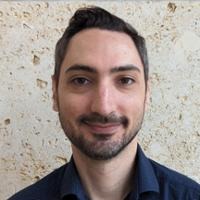Main Menu (Mobile)- Block
- Overview
-
Support Teams
- Overview
- Anatomy and Histology
- Cryo-Electron Microscopy
- Electron Microscopy
- Flow Cytometry
- Gene Targeting and Transgenics
- Immortalized Cell Line Culture
- Integrative Imaging
- Invertebrate Shared Resource
- Janelia Experimental Technology
- Mass Spectrometry
- Media Prep
- Molecular Genomics
- Primary & iPS Cell Culture
- Project Pipeline Support
- Project Technical Resources
- Quantitative Genomics
- Scientific Computing Software
- Scientific Computing Systems
- Viral Tools
- Vivarium
- Open Science
- You + Janelia
- About Us
Labs:
Project Teams:
Main Menu - Block
Labs:
Project Teams:
- Overview
- Anatomy and Histology
- Cryo-Electron Microscopy
- Electron Microscopy
- Flow Cytometry
- Gene Targeting and Transgenics
- Immortalized Cell Line Culture
- Integrative Imaging
- Invertebrate Shared Resource
- Janelia Experimental Technology
- Mass Spectrometry
- Media Prep
- Molecular Genomics
- Primary & iPS Cell Culture
- Project Pipeline Support
- Project Technical Resources
- Quantitative Genomics
- Scientific Computing Software
- Scientific Computing Systems
- Viral Tools
- Vivarium
people_blocks-people_blocks_name_and_labs | block
people_blocks-people_blocks_action_picture | block

people_blocks-people_blocks_bio_summary | block
Imaging Application Scientist
people_blocks-people_blocks_biography | block
Biography
Nicolas obtained his PhD from the University of Strasbourg, France, studying how vertebrates regulate their size and vertebrae number. He then moved on to a first post-doc at Stanford University to study how cells, within organs, communicate with each other over long distances. He finally moved to the Stowers Institute for Medical Research where he discovered how immune cells control organ regeneration in zebrafish. At Janelia, Nicolas will use his problem solving skills and microscopy knowledge to help researchers tackling some of the most challenging questions in biology.
janelia7_blocks-janelia7_featured_blocks | block
